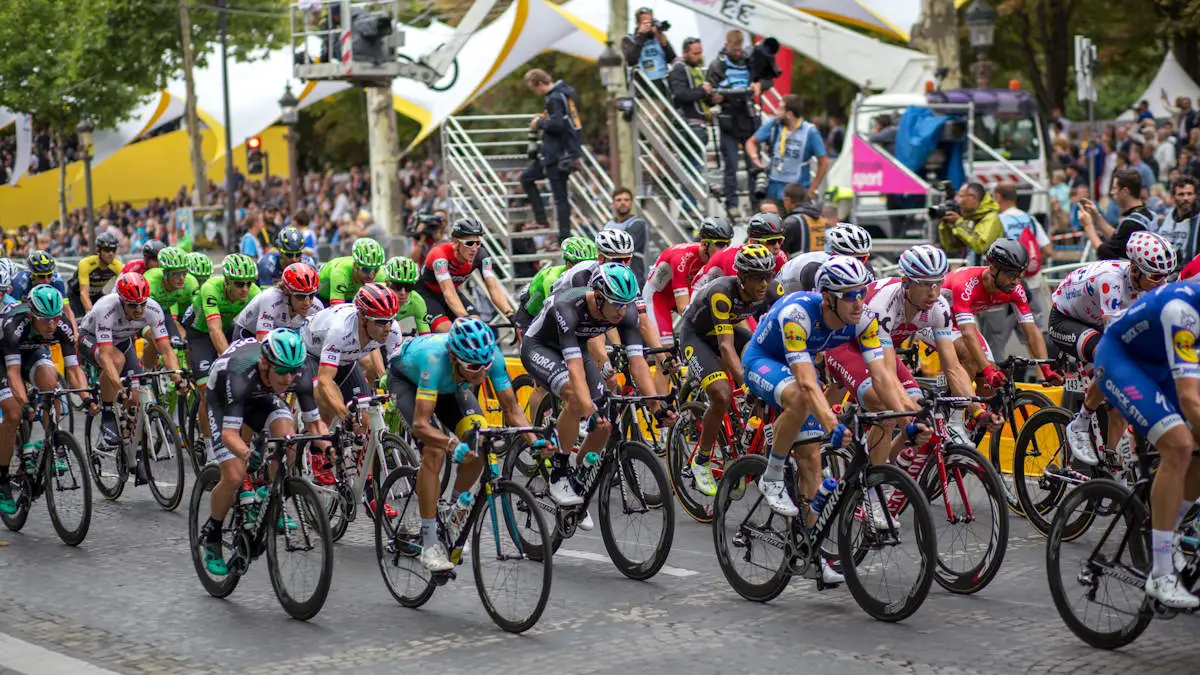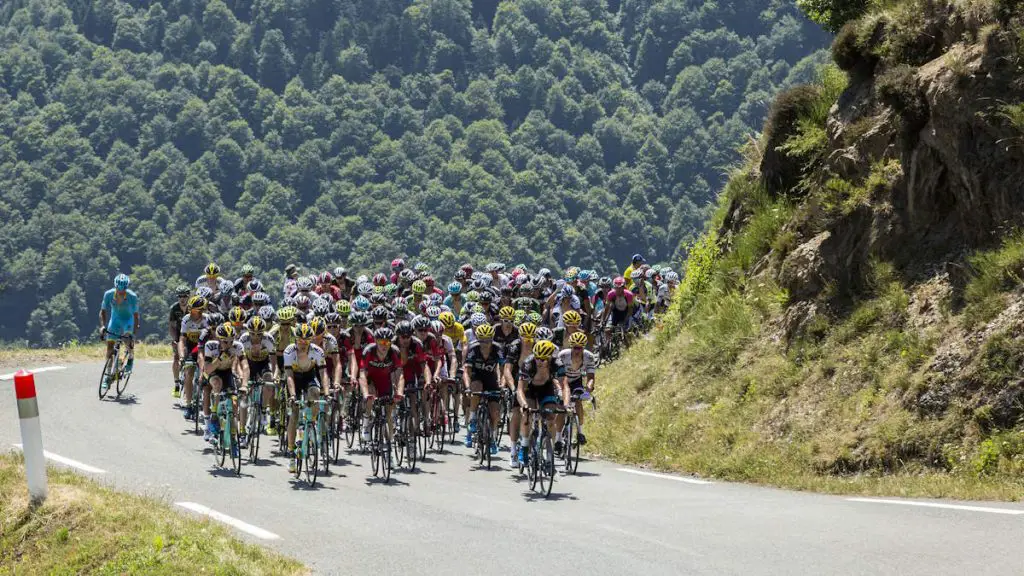The “Washing Machine Effect” is a term used in cycling circles to illustrate the intense and dynamic nature of a bicycle race, specifically within the main group of riders known as the peloton. This phenomenon encapsulates the rapid shifts in positioning, abrupt changes in speed, and sudden strategy alterations that lead to a turbulent, swirling effect, just like clothes in a washing machine. Understanding the intricacies of this effect is key to comprehending the strategic complexities inherent in professional cycling.
A peloton is the main pack of riders in a bicycle race. In a large race, the peloton might contain dozens or even hundreds of riders, all in close proximity to one another. When the peloton is moving smoothly and predictably, it’s relatively easy for riders to maintain their positions and ride safely.
The washing machine effect begins to occur as the cyclists in the peloton approach the final stretch of a sprint stage. During these critical moments, every cyclist is vying for the most advantageous position. This desire to lead or be near the front creates a highly dynamic, ever-changing situation.
A critical aspect to understand is that cycling is a sport that heavily relies on drafting-using the cyclist in front of you to block the wind, which reduces air resistance and allows you to maintain higher speeds with less effort. Therefore, riders are always looking to position themselves in the slipstream of others, and ideally, they want to be near the front but not in the very front. Being in front means you are doing all the work pushing against the wind while being too far back can put you out of contention.
So, in the context of the washing machine effect, if a rider isn’t strong enough, skilled enough, or doesn’t have good team support, they might find themselves being continually overtaken by other riders. This process can result in the cyclist being pushed back in the pack, akin to a piece of clothing being moved around in a washing machine.

Further adding to the complexity, teams will be working together, trying to get their sprinter into the best possible position for the final surge to the finish line. They use tactics and strategies to move their sprinter up through the field, adding to the swirling, churning effect.
This constant, fluid motion of cyclists jostling for the position can be chaotic and stressful. It requires a great deal of skill and tactical knowledge to navigate. Cyclists must maintain an acute awareness of their surroundings, keep an eye on rival teams and cyclists, and conserve their energy for the final sprint—all while moving at incredibly high speeds.
Also, various other factors can cause a lot of movement or turbulence within the peloton, creating what is sometimes referred to as the “washing machine effect.”
- Changes in speed: If the pace of the race suddenly changes, such as when riders at the front of the peloton begin to sprint or climb, the rest of the peloton needs to react quickly. This can cause riders to shuffle around as they adjust their positions, creating a turbulent effect.
- Wind and weather: Strong winds, especially crosswinds, can significantly disrupt the peloton. Riders will jostle for position to stay in the sheltered “draft” behind other riders, leading to a lot of movement.
- Terrain and obstacles: Sharp turns, narrow roads, and obstacles like roundabouts can create chaos in the peloton. Riders need to quickly maneuver around these obstacles, often leading to rapid and unpredictable movement.
- Attacks and strategies: Cyclists or teams might make sudden “attacks” or change their strategy during the race, leading to rapid changes in the peloton’s formation.
All of these factors can lead to a situation where the riders in the peloton are constantly shifting and changing positions, much like clothes tumbling in a washing machine. This “washing machine effect” can make it more difficult and stressful for riders to maintain their positions and ride safely.
- BikesOnline Carlsbad: Your Premier Cycling Destination in San Diego County - June 15, 2025
- Top 19 fastest Paris-Roubaix editions - April 14, 2025
- Fausto Coppi in Africa [A Very Rare Photo] - January 4, 2025

